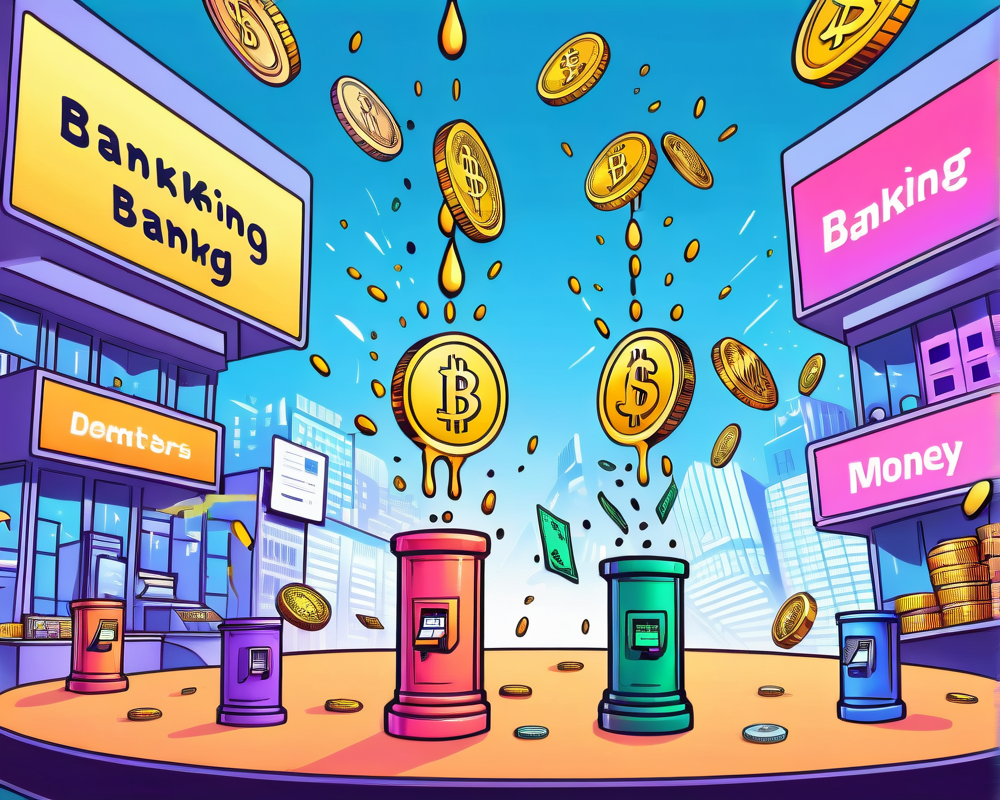A New Era of Finance
Decentralized finance (DeFi) is shaking up our understanding of money like a dog shaking off water after a bath. Gone are the days when banks held the monopoly on financial transactions. Instead, technological innovations such as blockchain and smart contracts are taking center stage, making finance accessible to all without the need for traditional intermediaries. It’s as if the internet decided it was tired of waiting for banks to catch up and just went ahead and built a new financial playground.
The Comparing Game: DeFi vs Traditional Banks
When you stack DeFi against the legacy banking system, the differences are stark. Picture a race: on one side, the slow-moving banking behemoth with its layers of bureaucracy and archaic practices; on the other, a sprightly DeFi system that seems to change the game weekly. In just a few short years, DeFi has created a world of payment systems, lending protocols, and exchanges faster than you can say ‘blockchain.’ And who could forget stablecoins? They are finding their footing with fiat-pegged assets like a swan learning to walk—awkward at first but positively graceful in motion.
Return Potential That’ll Make You LOL
If you’re tired of finding pennies at the back of your couch for bank interest gains, it’s time to explore DeFi. The average checking account in the U.S. offers a paltry 0.06% interest—practically equivalent to your great aunt’s spiced apple cider recipe! Contrast that with DeFi protocols like Yearn.finance, which can offer returns of around 11.4% on stablecoins. Talk about a numbers game where the house always wins—in this case, you do!
Innovation: The Fast Lane vs The Slow Parade
The DeFi sector thrives on innovation, which is surprising given that most banks are still trying to master the art of sending email notifications. While banks might pat themselves on the back for introducing mobile banking, DeFi has gone from zero to sixty faster than a sports car breaking the sound barrier. Remember the last time banks introduced a new feature? Probably not, and that’s part of the problem.
Barriers: Who Needs ’Em?
Let’s talk accessibility. DeFi aims to remove barriers and make finance inclusive, while traditional banks are busy closing branches—with a record 3,500 closures in just five years in the UK. As Bill Gates once nonchalantly stated, “Banking is necessary; banks are not.” Fast forward to today, and the competition landscape has shifted dramatically. The barriers have not just been removed; they’ve been annihilated!
Room for Growth
Yet, all is not hunky-dory in the world of DeFi. As this financial juggernaut gathers steam, it still heavily relies on the Ethereum blockchain, which means high fees and slow transaction times when the network gets congested. Luckily, competitors like Polkadot are entering the fray, boasting a rising tide of developers eager to create alternatives. The question isn’t if DeFi will succeed but when its growing pains will settle down.
The Elephant in the Room: Trust Issues
Let’s not sugarcoat it: the financial crash left many feeling like they’ve been thrown under a bus. Bailing out banks with public funds has fostered deep-seated resentment, evident in the decentralized movement’s rise. DeFi protocols are only as credible as their developers, and instances of hacks have shown vulnerabilities ripe for exploitation. As we lean more into decentralization, the importance of security and trust cannot be overstated.
Conclusion: The Future belongs to Decentralization
Whether you’re singing the praises of decentralized finance or still clinging to the warm comforts of traditional banking, there’s no denying that DeFi holds the keys to the future of finance. It’s like swapping out your old flip phone for the latest smartphone—exciting, a little scary, and (hopefully) well worth the investment.




